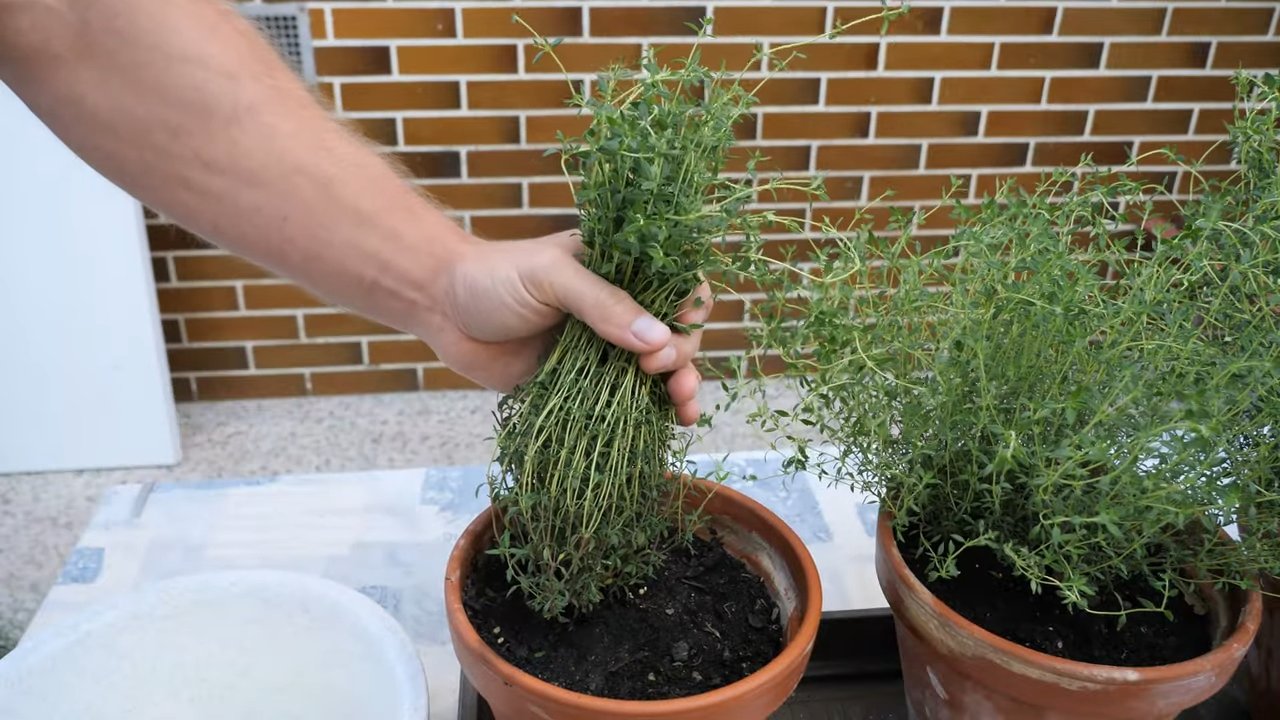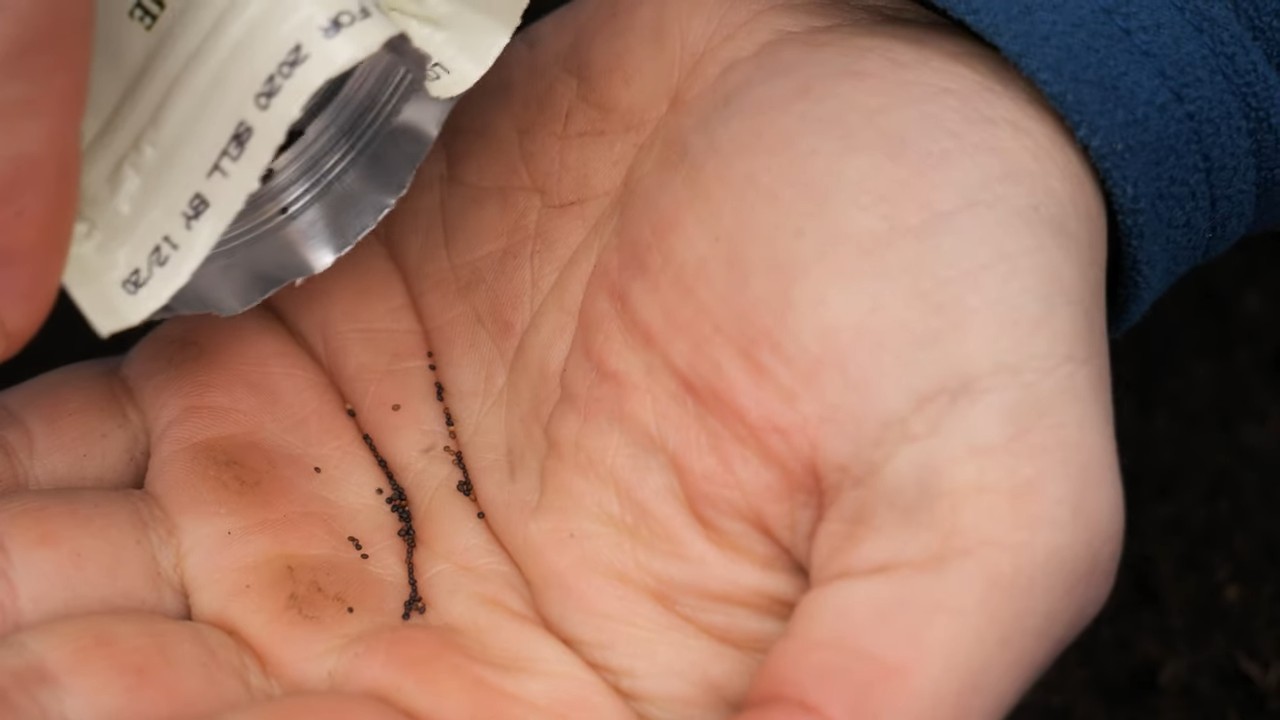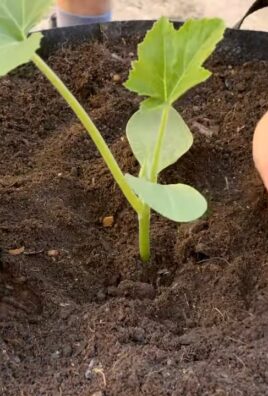Growing Thyme at Home doesn’t have to be a daunting task! Imagine stepping outside your door and snipping fresh, fragrant thyme to elevate your culinary creations. No more bland dishes – just vibrant, herbaceous flavor at your fingertips. But what if I told you that cultivating this aromatic herb is easier than you think, even if you don’t have a sprawling garden?
Thyme, with its rich history dating back to ancient Egypt where it was used for embalming, and its significance in ancient Greece as a symbol of courage, has been cherished for centuries. Beyond its historical uses, thyme is a culinary staple in many cultures, adding depth and complexity to countless dishes. But why rely on store-bought thyme when you can have a constant supply right outside your door?
In today’s fast-paced world, many of us crave a connection to nature and a sense of self-sufficiency. Growing Thyme at Home offers just that! It’s a simple yet rewarding way to bring a touch of the outdoors in, enhance your cooking, and even boost your well-being. This DIY guide will provide you with easy-to-follow tricks and hacks to successfully grow thyme, regardless of your gardening experience or space limitations. Get ready to unlock the secrets to a thriving thyme garden and enjoy the delightful benefits of this versatile herb!

Growing Thyme at Home: Your Comprehensive DIY Guide
Hello, dear garden friends! I’m so excited to show you today how you can easily grow thyme at home. Thyme is not only an incredibly versatile herb in the kitchen but also a beautiful, low-maintenance plant that enriches any garden or balcony. Whether you are a beginner or an experienced gardener, this guide will walk you through the process step by step. Let’s get started!
What You Need for Growing Thyme
Before we get started, here is a list of the things you’ll need:
- Thyme seeds or thyme plants: You can either start with seeds or buy pre-grown plants. I personally find it exciting to start with seeds, but plants are, of course, faster.
- Starter pots or trays: For starting the seeds.
- Potting soil: A special herb soil or a mixture of garden soil, sand, and compost is best.
- Pots or planter boxes: For the mature plants. Make sure they have drainage holes.
- Garden shears: For harvesting and pruning.
- Watering can or spray bottle: For watering.
- Optional: Plant labels to keep track.
Growing Thyme from Seed: Step by Step
If you’ve decided to grow from seed, here is a detailed guide:
- Prepare the starter pots: Fill the starter pots or trays with potting soil. Press the soil down lightly, but not too firmly.
- Sow the seeds: Thyme seeds are very small. Therefore, sprinkle them sparingly on the soil. You can press them down lightly, but do not cover them with soil, as thyme is a light germinator. This means the seeds need light to sprout.
- Water: Gently moisten the soil with a spray bottle. Avoid washing the seeds away. The soil should be damp, but not wet.
- Location: Place the starter pots in a bright, warm location. A windowsill with direct sunlight is ideal.
- Germination: Germination usually takes 14-21 days. Keep the soil moist during this time. You can also cover the pots with a transparent film or a lid to increase humidity. However, be sure to ventilate regularly to prevent mold.
- Pricking out: As soon as the seedlings are large enough (about 5-7 cm / 2-3 inches high) and have developed a few leaves, you can prick them out. This means you carefully remove them from the starter pots and transplant them into separate pots or planter boxes. Be careful not to damage the roots.
Repotting Thyme Plants
If you have already purchased pre-grown thyme plants, you can skip this section and start directly with repotting.
- Prepare the pots: Choose pots or planter boxes with enough space for the roots. Make sure they have drainage holes so excess water can run off. Fill the pots with potting soil.
- Remove the plants from the old pots: Gently press on the bottom of the old pot to loosen the plant. If the roots are very tight, you can gently squeeze the pot or run a knife along the edge.
- Place the plants: Place the thyme plants in the new pots. The top of the root ball should be roughly level with the soil surface.
- Fill with soil: Fill the pots with soil and press it down lightly.
- Water: Water the plants thoroughly until water runs out of the drainage holes.
The Right Location for Thyme
Thyme loves the sun! Choose a location that offers at least 6 hours of direct sunlight per day. A sunny balcony, a terrace, or a garden is ideal. Thyme is also relatively drought-resistant, so it’s important that the soil is well-draining. Waterlogging can lead to root rot.
Watering and Fertilizing
- Watering: Water thyme only when the soil is dry. Overwatering is one of the most common mistakes when growing thyme. In the summer, you may need to water daily, while in the winter, you might only need to water every few weeks. Simply feel the soil before you water.
- Fertilizing: Thyme does not need much fertilizer. A light application of an organic herb fertilizer in the spring is usually sufficient. Avoid over-fertilizing, as this can lead to excessive leaf growth, which can affect the taste.
Pruning and Harvesting Thyme
- Pruning: Regular pruning promotes growth and prevents the plants from becoming woody. Cut the shoots back by about a third after the flowering period.
- Harvesting: You can harvest thyme all year round. Simply cut the required shoots with garden shears. It’s best to harvest in the morning when the essential oils are most concentrated.
Overwintering Thyme
Thyme is generally hardy, but in very cold regions, it can be a good idea to protect the plants.
- In a pot: Move the pots to a sheltered location, such as against a house wall or in an unheated room. Water the plants only sparingly to prevent the soil from drying out.
- In the garden: Cover the plants with brushwood or leaves to protect them from frost.
Common Problems and Solutions
- Root rot: Caused by overwatering. Make sure the soil is well-draining and water only when the soil is dry.
- Aphids: Small, sucking insects that can infest the leaves. Spray the plants with a solution of water and dish soap.
- Fungal diseases: Can occur with high humidity. Ensure good ventilation and remove affected leaves.
Thyme in the Kitchen
Thyme is an incredibly versatile herb that can be used in many different dishes. Here are some ideas:
- Meat dishes: Thyme pairs excellently with lamb, chicken, beef, and pork.
- Vegetable dishes: Thyme adds a special touch to vegetable dishes like potatoes, carrots, zucchini, and eggplant.
- Soups and stews: Thyme is an important component of many soups and stews.
- Sauces: Thyme can be used to flavor sauces for pasta, meat, or vegetables.
- Herb butter: Mix thyme with butter, garlic, and other herbs to make a delicious herb butter.
Different Thyme Varieties
There are many different thyme varieties, each with its own unique taste and appearance. Here are some popular ones:
Creeping Thyme (Thymus serpyllum): Ideal as a ground cover or for rock gardens.
Common Thyme (Thymus vulgaris): The most commonly grown thyme with a strong, savory flavor.
Lemon Thyme (Thymus citriodorus): Has a lemon-like scent and taste.

Conclusion
So, there you have it! Growing thyme at home, whether you’re a seasoned gardener or a complete beginner, is not only achievable but also incredibly rewarding. From the intoxicating aroma that fills your kitchen to the burst of fresh flavor it adds to your culinary creations, homegrown thyme elevates the everyday. We’ve explored the simple steps, from selecting the right variety for your needs to providing the optimal growing conditions, and even touched upon troubleshooting common issues.
But why is this DIY trick a must-try? Beyond the obvious benefit of having fresh thyme readily available, growing your own offers a level of control and satisfaction that store-bought herbs simply can’t match. You know exactly where your thyme comes from, ensuring it’s free from harmful pesticides and chemicals. Plus, the act of nurturing a plant from seed or cutting to a thriving herb is a deeply fulfilling experience. It connects you to nature, even in the smallest of ways, and provides a constant source of fresh, flavorful ingredients.
Consider these variations to personalize your thyme-growing journey:
* Lemon Thyme Infusion: For a citrusy twist, try growing lemon thyme. Its bright, zesty flavor is perfect for fish, poultry, and even desserts.
* Creeping Thyme Ground Cover: If you’re looking for a fragrant ground cover, creeping thyme is an excellent choice. It releases its delightful scent when walked upon and adds a touch of charm to any garden.
* Thyme-Infused Oil: Once you have a bountiful harvest, preserve the flavor by infusing olive oil with fresh thyme sprigs. This aromatic oil is perfect for drizzling over salads, roasted vegetables, or grilled meats.
* Thyme Tea: Dry your thyme and use it to make a soothing and flavorful tea. Thyme tea is known for its potential health benefits, including its ability to soothe coughs and sore throats.
Don’t be afraid to experiment and find what works best for you. The beauty of growing your own herbs is that there’s no right or wrong way to do it. The most important thing is to enjoy the process and savor the fruits (or rather, herbs) of your labor.
We wholeheartedly encourage you to give this DIY trick a try. Start small, be patient, and don’t be discouraged by initial setbacks. Every gardener, regardless of experience, faces challenges along the way. The key is to learn from your mistakes and keep experimenting.
Once you’ve experienced the joy of growing your own thyme, we’d love to hear about it! Share your experiences, tips, and photos in the comments below. Let’s create a community of thyme-loving gardeners and inspire others to embark on this rewarding journey. What variety did you choose? What challenges did you face? What are your favorite ways to use your homegrown thyme? Your insights could be invaluable to someone just starting out. So, get your hands dirty, embrace the process, and discover the magic of growing thyme at home.
Frequently Asked Questions (FAQ)
What is the best way to start growing thyme?
The best way to start growing thyme depends on your preference and resources. You can start from seeds, cuttings, or by purchasing a small established plant from a nursery. Starting from seeds is the most economical option, but it requires more patience as thyme seeds can be slow to germinate. Cuttings are a faster way to propagate thyme, but you’ll need access to a healthy thyme plant to take cuttings from. Buying an established plant is the easiest and quickest way to get started, as you’ll have a mature plant that’s ready to thrive in your garden or container.
How much sunlight does thyme need?
Thyme thrives in full sun, meaning it needs at least 6-8 hours of direct sunlight per day. Insufficient sunlight can lead to leggy growth, reduced flavor, and increased susceptibility to diseases. If you’re growing thyme indoors, place it near a sunny window or supplement with grow lights.
What kind of soil is best for growing thyme?
Thyme prefers well-draining soil that is slightly alkaline. Heavy clay soil can retain too much moisture, leading to root rot. Amend heavy soil with compost, perlite, or sand to improve drainage. A soil pH of 6.0 to 8.0 is ideal for thyme growth. You can test your soil pH with a soil testing kit and amend it accordingly.
How often should I water thyme?
Thyme is drought-tolerant and doesn’t need frequent watering. Overwatering is a common mistake that can lead to root rot. Water thyme only when the soil is dry to the touch. During hot, dry weather, you may need to water more frequently, but always allow the soil to dry out between waterings. When watering, water deeply, allowing the water to reach the roots.
How do I prune thyme?
Pruning thyme is essential for maintaining its shape, promoting bushier growth, and preventing it from becoming woody. Prune thyme regularly, especially after flowering. Trim back the stems by about one-third, removing any dead or woody growth. Avoid cutting back into the woody parts of the plant, as this can hinder new growth.
When is the best time to harvest thyme?
You can harvest thyme throughout the growing season, but the flavor is most intense just before flowering. To harvest thyme, snip off the stems with scissors or pruning shears. Harvest in the morning, after the dew has dried, for the best flavor. You can use fresh thyme immediately or dry it for later use.
How do I dry thyme?
There are several ways to dry thyme. One method is to tie the stems together in small bundles and hang them upside down in a cool, dry, and well-ventilated place. Another method is to spread the thyme sprigs on a baking sheet and dry them in a low oven (around 170°F) for a few hours. You can also use a dehydrator to dry thyme. Once the thyme is completely dry, store it in an airtight container in a cool, dark place.
What are some common problems when growing thyme?
Some common problems when growing thyme include root rot, fungal diseases, and pests. Root rot is caused by overwatering and poorly draining soil. Fungal diseases can occur in humid conditions. Pests such as aphids and spider mites can also attack thyme. To prevent these problems, provide thyme with well-draining soil, adequate sunlight, and good air circulation. Inspect your plants regularly for signs of pests or diseases and take appropriate action if necessary.
Can I grow thyme indoors?
Yes, you can grow thyme indoors, but it requires adequate sunlight or grow lights. Choose a pot with drainage holes and use well-draining potting mix. Place the pot near a sunny window or supplement with grow lights for at least 6-8 hours per day. Water thyme only when the soil is dry to the touch.
What are the different varieties of thyme?
There are many different varieties of thyme, each with its own unique flavor and characteristics. Some popular varieties include common thyme, lemon thyme, creeping thyme, and woolly thyme. Common thyme is the most widely used variety and has a classic thyme flavor. Lemon thyme has a citrusy flavor that is perfect for fish and poultry. Creeping thyme is a low-growing variety that is often used as a ground cover. Woolly thyme has soft, fuzzy leaves and is also used as a ground cover. Choose the variety that best suits your needs and preferences.




Leave a Comment